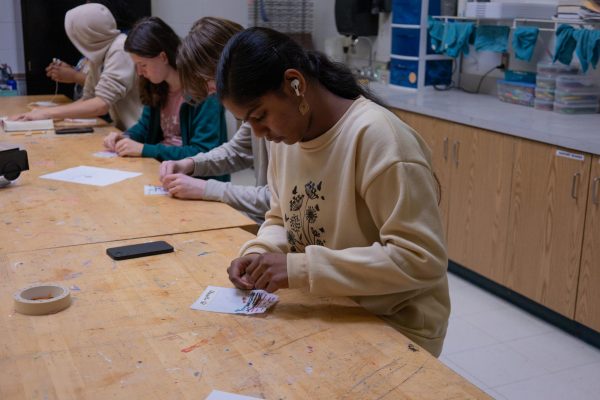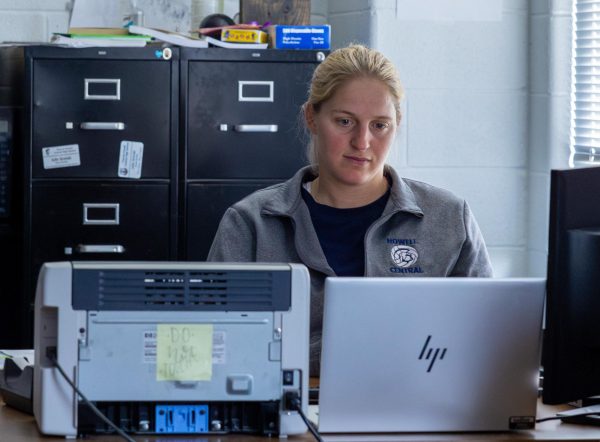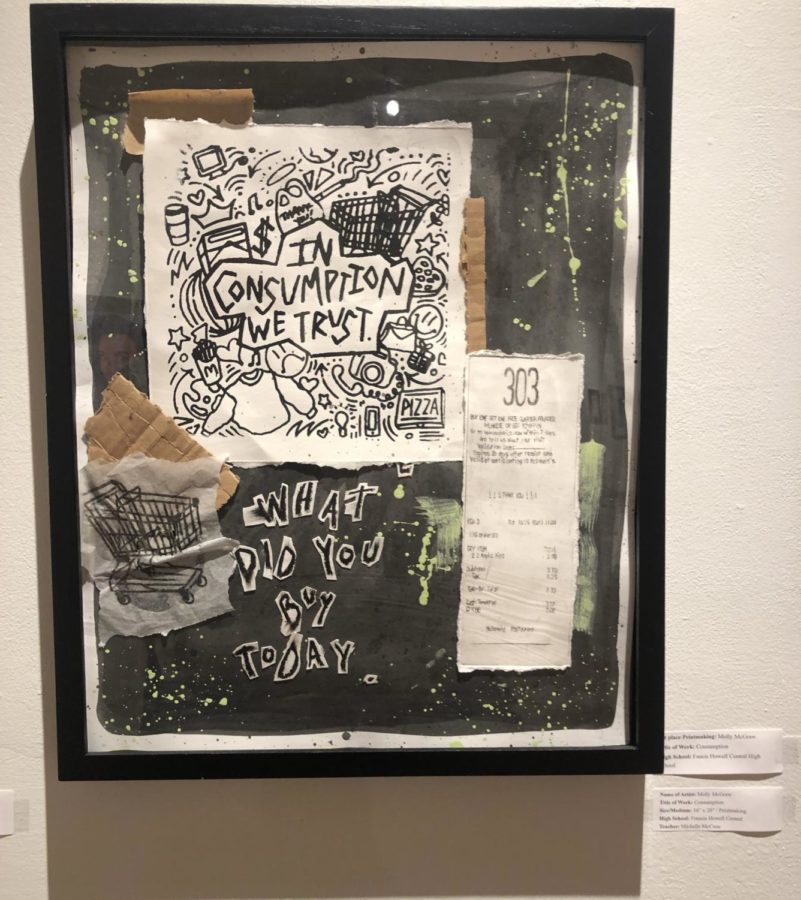Breaking The Barrier
A printmaking design called “Consumption.” This piece was entered into the Lindenwood art show, and won 1st place! Illustration by Molly McGraw.
Even though art blocks are more negative rather than positive, they’re very similar to how artists develop the passion to continue drawing. Artists have multiple ways to become an artist, but there’s always new ways to develop a passion. Freshman Grayson Christensen was introduced to art introduced because of his family being associated with the hobby, and he grew to develop a genuine interest into it. “My entire family is just a chain of artists, so I grew up with it,” Christensen said, “So I’ve always been interested in drawing, but five years ago is whenever I began as an official artist.”
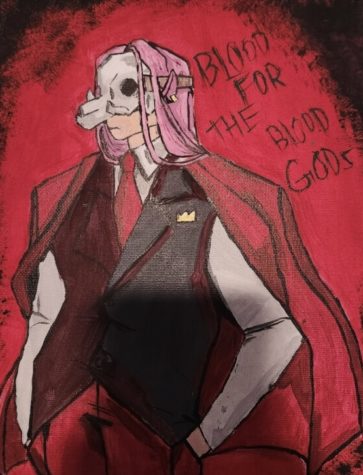
Christensen, having a family of artists, would discover his own way of how to draw. Christensen develops ideas and inspiration through intrusive thoughts. Intrusive thoughts are treated with negative aspects- but Christensen’s thoughts help out when wanting to draw. Ideas begin to grow in his mind, as this helps him come up with pieces he’s proud of. A piece is very important to an artist, but sometimes, art can be impactful, too, especially if it’s a person that has passed away unexpectedly.
“I did this painting of Technoblade before his passing, and at the time, I didn’t know he had cancer, but I’m proud of it,” Christensen said, “There’s more emotion there now because of it.”
Whether it be from a classroom, or in a bedroom, inspiration sometimes does begin with family and genuine interest. Senior Molly McGraw is constantly sweeping the pencil shavings off of her desk with how often she draws, and every artist has a beginning; hers was her father that motivated her.
“My dad has always loved comic book art, so his work taught me how to draw more when I was younger,” McGraw said, “He showed me those books of how to draw basic anatomy, and I really grew to like it, so now I’ve grown to apply the information I learned as a kid to newer drawings.”
Similar to the other artists, McGraw will have random ideas appear in her mind, and will scroll through Pinterest for inspiration. Occasionally, it’ll help her create a piece that aims for success.
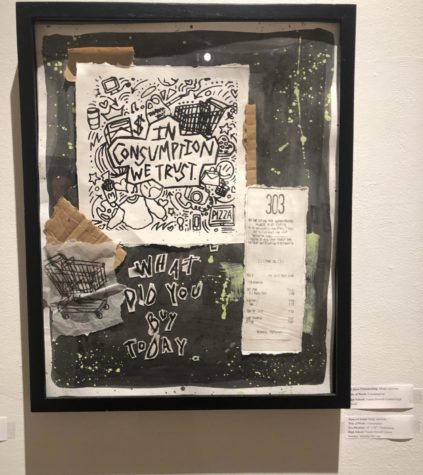
“I had a piece of mine entered into a Lindenwood art show last year, and it started from me creating a board of ideas on Pinterest,” McGraw said, “I won first place in the printmaking section, and it was a whole lot of fun.”
And winning a competition at an art show is not an easy task.! McGraw’s favorite piece isn’t just because it was successful, but because it was meaningful to her
“My favorite would have to be the one that won the art show, because it really shows my art style the best,” McGraw said, “It’s interesting, it strays away from making something just to make something, and that I made it to actually have a purpose to it.”
With a young artist’s perspective, learning different skills and developing new processes while they draw is very important to how they grow as an artist. Like McGraw, it helps develop bigger art pieces that achieve success or develop an impact. Or, like Christensen, it’ll develop more artwork that has more meaning and emotion, and it develops the concept for the art. With Kelly, it develops a creative world with the inspiration of references, letting him make original characters. With all of these creative minds working together, brushing paint on the canvas, scratching the pencil on the paper, or successfully making a beautiful printmaking piece, art teacher Michelle McCune watches the processes that students develop, a fond smile on her face every time a student grows into art.
“Watching the creative process is amazing, but also a difficult one.” Mrs. McCune said, “First, you struggle with what to create and then once you have the idea it’s super exciting, but throughout the creative process it can be difficult when you work through the process, experimenting with materials and composition.”
With art blocks, they can be complicated, but Mrs. McCune sees a more positive solution for her students
“Brainstorming and making lists is the best way to work through an art block,” Mrs. Mccune said, “Interacting with others in the class can also be very motivating, and sometimes you just need to relax and look around, inspiration is everywhere!”
Your donation will support the student journalists of Francis Howell Central High School. Your contribution will allow us to purchase equipment and cover our annual website hosting costs. FHCToday.com and our subsequent publications are dedicated to the students by the students. We hope you consider donating to allow us to continue our mission of a connected and well-informed student body.



